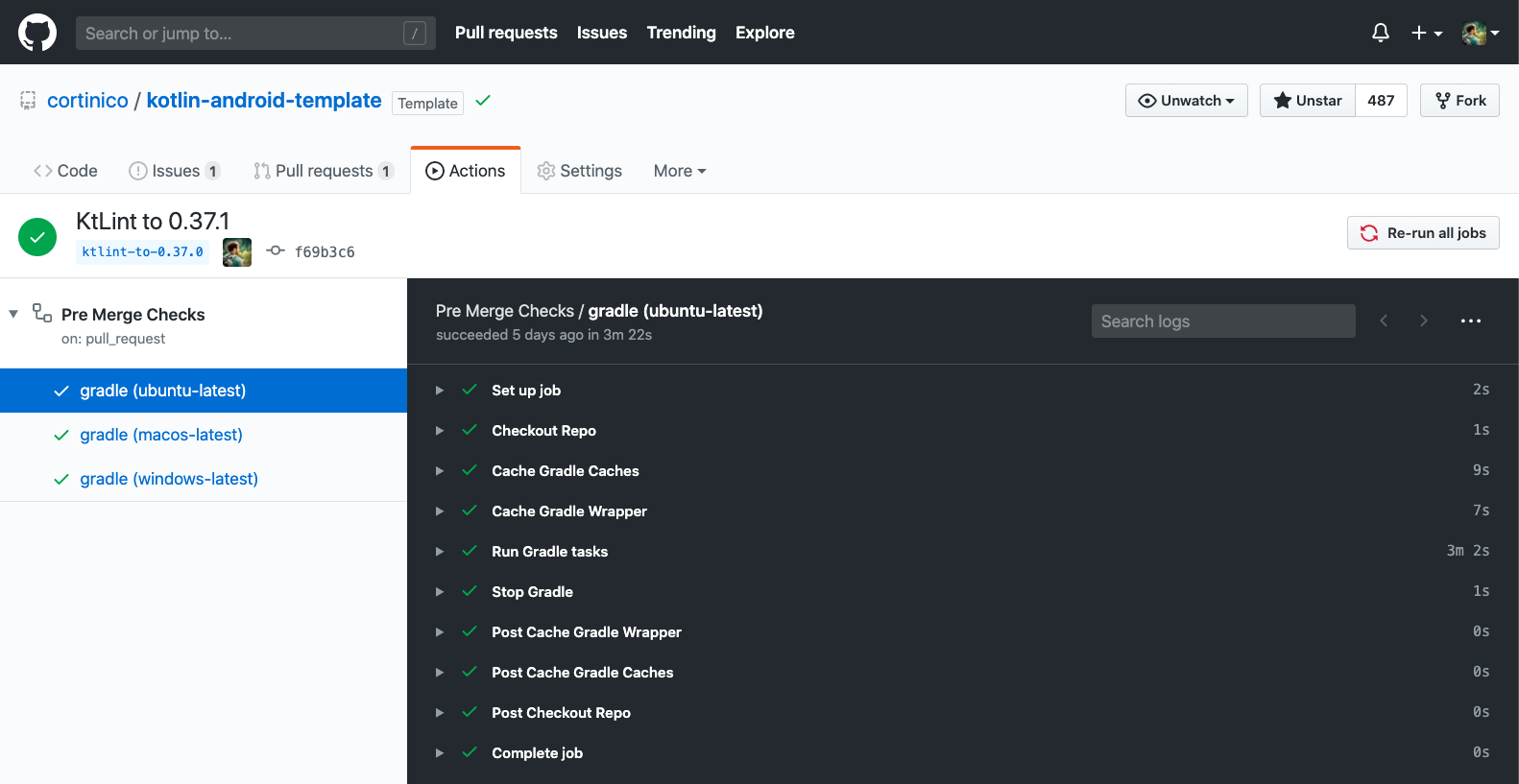

HasDependency - takes two string arguments, first of them being a library name, and second - a configuration name, and returns a boolean denoting whether specified configuration depends on specified library. Calling this method with “.FloatingActionButton” and true arguments it returns “.floatingactionbutton.FloatingActionButton” which is the name of the new FloatingActionButton class.
#ANDROID STUDIO GITHUB TEMPLATES ANDROID#
GetMaterialComponentName - takes two arguments, first of them being a name of an Android view class, and the second - a boolean denoting whether a new class name should be used. GetConfigurationName - returns currently used configuration name, such as “implementation”. IsAndroid圎nabled - returns boolean if the project uses AndroidX libraries.

You can access those arguments by calling “getApplicationTheme().name”, “getApplicationTheme().isAppCompat”, and “getApplicationTheme().exists”. “AppTheme”), boolean denoting whether application theme inherits from AppCompat theme, and whether the application has an application theme at all. GetApplicationTheme - returns map containing application theme name (e.g. for MacOS that would be: /Users//app/src/main GetAppManifestDir - returns the path to the directory in which app manifest is stored, e.g. calling the method with “&foo “ argument would produce “foo”. Seems to yield the same results as escapeXmlString, but uses different method for conversion internally.ĮxtractLetters - takes one string argument and returns string containing only letter characters from that string, e.g. calling this method with “Hello\nWorld” argument, would return “HelloĮscapeXmlText - takes one string argument and returns string converted to Xml-attribute-safe value.
 for “&” the method will produce “<''>&”.ĮscapeXmlString - takes one string argument and returns a string with xml characters escaped.
for “&” the method will produce “<''>&”.ĮscapeXmlString - takes one string argument and returns a string with xml characters escaped. It can return three integer values - either 1 if the first argument is greater than the second, 0 if the arguments are identical, or -1 if the second argument is greater than the first.ĬompareVersionsIgnoringQualifiers - the same as compareVersions, but uses GradleVersion::compareIgnoringQualifiers method for comparison.ĮscapePropertyValue - takes one string argument, and returns a string with removed escaping backslashes - for example calling the method with “\\ foo “ argument will produce “ foo “.ĮscapeXmlAttribute - takes one string argument and returns a string with escaped xml characters. Then it parses the arguments GradleVersion objects and compares them using GradleVersion::compareTo method. calling this method for both “FooActivity”, or “FooFragment” would produce “foo” ĬompareVersions - two string arguments, both describing a Gradle version - usually three numbers separated by dots, with an optional suffix. “FooBar” would be converted to “foo_bar” ĬlassToResource - takes one string argument, converts Android components names to resource names, e.g. It is commonly is named ĪctivityToLayout - takes one string argument, and returns a string with activity name converted to layout name, for example “FooActivity” would be converted to “activity_foo” ĬamelCaseToUnderscore - takes one string argument, as the name implies, converts camel case strings to underscored ones, e.g. This file defines the variables accessible in all of the template files. thumbs - optional element containing image file paths to the preview picture visible in new the file group dialog.help - optional parameter that defines a hint that appears at the bottom of the new component dialog when the user is editing a particular parameter’s value.we could use this feature to generate an activity’s layout name based on a feature name : default - default value of the parameter, can reference other parameters, e.g.constraints - constraints of the input, can take following values: layout, unique, nonempty, package.name - parameter name visible to the user.id - parameter name that can be used to reference parameter’s value in template files.value - category in which the template would show in, it creates a new category in the file picker if there was no such category.description - template description, visible at the top of the new file group dialog.name - name of the template, visible to the user in the new file list.Element defining the file group template.


 0 kommentar(er)
0 kommentar(er)
